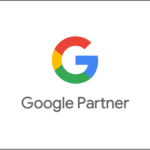If you’re a business owner you’ve gotten solicited at one point or another by a company guaranteeing you first place on Google. While this sounds good in theory, it’s not as simple as agreeing to a contract on a cold call. It’s thinking like this that has lead to SEO and marketing in general to have a cloud of uncertainty over it for years.
In the early days of SEO, Google’s algorithm was an infant, and didn’t have advance logic and reasoning yet. So, “marketers” (I use that term lightly) took advantage with keyword stuffing (the trick on making text the same color as the background) and buying back links (from shady sites). These “tricks” worked for a while. But when Google got older and wiser, these tactics got banned, and those trying to trick Google got blacklisted. By blacklisted, I mean gone from Google completely, like they never existed.
I’ve trained and coached teams on best SEO practices for over a decade, and it amazes me that the core principles of SEO have never changed, just some of the small methods of communicating that to Google.
Tip #1: Keep It Simple – Understand what Google Wants
Like any relationship, understanding what your partner wants makes life easier. SEO is no different. Google and your website are in a relationship. Yes, in this scenario Google is in a lot of relationships, and understanding that you’re one of a billion to Google is important.
What Google wants is to make the best user experience for people searching their site. Why? It’s simple, they want to keep making money. Each user is worth roughly $150 to Google, so keeping them happy with relevant results is very important. If you search for Marketing Agencies in Ithica NY, and all you get are international marketing agencies out of NYC and London, you’ll start looking for another search engine to use that give you what you are looking for. So, the algorithm tries very hard to match a users search query with the best 10 websites (plus ads) as possible.
What Google needs to make this happen is a catalog of all websites on the web and a way to rank them. This is where their crawlers come in, and their algorithm. To make it easier for your SEO partner, make sure your website can be read by the crawlers, submit a site map and set up Google Search Console (Google Webmaster Tools).
Tip # 2: Content Is and Will Always Be KING (or Queen depending on who’s the head of everything)
To me this is the foundation for SEO, and is the core of any marketing strategy, as well as SEO. What do you do, and why is it important to your users/customers? The better you articulate this, the better relevance your website will have when your target audience searches, and the more likely you’ll be indexed (found on Google). After all Google crawls your content to determine what your site is all about and where to show you.
Tip #3: Write Your Content Like a NORMAL Person
This could easily be tip #2.5, but it’s critical to emphasize to write your content to your audience, not to Google. There’s a myth out there that the more keywords you can squeeze into your content the better, and that’s very misleading.
My rule of thumb is at least three times on the page that you want to tell Google to associate with that page. I.e. if you’re a Plumber and you want to improve your tanking/be found for “emergency kitchen repairs,” make sure that your page has that keyword phrase at least three times, naturally in the copy. Often times, this means expanding on the benefits and “why choose you” sections on the page. If you can convince your audience to pick up the phone and call, or complete the contact form, you’ve got good content.
Why 3 or more? Think for a moment like a computer. You don’t read really, you simply recognize patterns in code and text and associate with predefined meaning. So, to help the algorithm rank pages, one of the relevance factors is what they call keyword density. Now, full disclosure, 3 in my personal rule, and others may disagree. But it’s important to remember that Google does not disclose their formula, so it’s a bit of trial and error.
Tip #4: Ranking Is All About Votes
Ranking for both SEO and SEM are highly competitive. To go back to Google’s #1 goal – Keep users happy, by giving them what they want – Google does factor how users engage with their results as one major influence, and it makes sense. Users vote with their clicks, and the goal is to be the most popular girl in school and be prom queen. How to get clicks the right way? That’s where it’s simple, but a lot of hard work.
- First write great copy and make sure your meta descriptions and titles match the content on the pages. This is the snippets that appear on the search results page.
- Update your site and post new content in a blog or add new pages/services at least once a quarter, if not daily (depends on the business). For SEO, I’m a firm believer that once Google initially crawls your website it puts it in the done pile and forgets it. Think a single tree in the worlds largest forest. Google has other trees to index. So, you need to make updates and changes to “shake” your tree and say – “look over here.” This not only will help Google re-index your site, but by creating more content helps users engage and hopefully choose to do business with you.
- Have a social strategy that helps get your name out there, and drives quality traffic to your site
- Have a public relations strategy. This could be using free PR tools, or paying for PR Newswire to get content distributed.
- Make sure your User Experience works is great, and works on Mobile! You can have the best content, but if it doesn’t load right on a mobile device, you might as well have nothing.
- Buy traffic.
- This could be it’s own tip – in short buy exposure and traffic from Facebook, LinkedIn and other social sites, and even Google. While Google knows these are purchased clicks and factors that into their equation, it’s still votes and often results in returning traffic. The biggest mistake here is not targeting your ads to your customers. Keep everything relevant and it will all feed itself.
Tip # 5: Meta Data and Speculators
Over the years many people speculate on what the algorithm is, what factors are most important, yadi ya ya ya. The ONLY people that actually know this information is Google and their engineers. Everyone else is drawing conclusions based on what Google tells us (and they don’t have to be honest), and personal experiences.
Meta descriptions, titles, keywords and other back end tactics have been debated for years on IF they are still used in the algorithm. Google has openly stated that it does not use it as a factor, and many marketing agencies have stopped adding them to a sites code.
Please, please, please don’t let your agency or marketing guy do this to your site. Personally, I’ve worked on very large projects and have proven this to be a myth. The only reason I’ve had some pages show in a results page is due to the meta keywords. Even if Google does de-prioritize them in the future, there’s no harm in having them already there, should they change their mind.
On that note, I will confess, that I go back and forth on how to structure the meta keywords: I.e. a singular, or a sting of keywords with the most important first. Both are OK to use and it depends on the page. If your page has a singluar focus, use one. If it’s more a directory, it’s OK to have 3-5, but put the most important first. If you are using WordPress, use Yoast, it’s one of the best and simple tools.
In Conclusion:
SEO is a long term strategy that is focused on quality of content and how you articulate who you are, what you do and why it’s important to your target audience. If you do that and promote it you’ll be OK. There is no quick fix for SEO, and no one, not even Google will promise first page placement, so just hang up on those people.
It’s a lot of work to think simple, keep on top of it and continually improving, but it will pay off over time.




